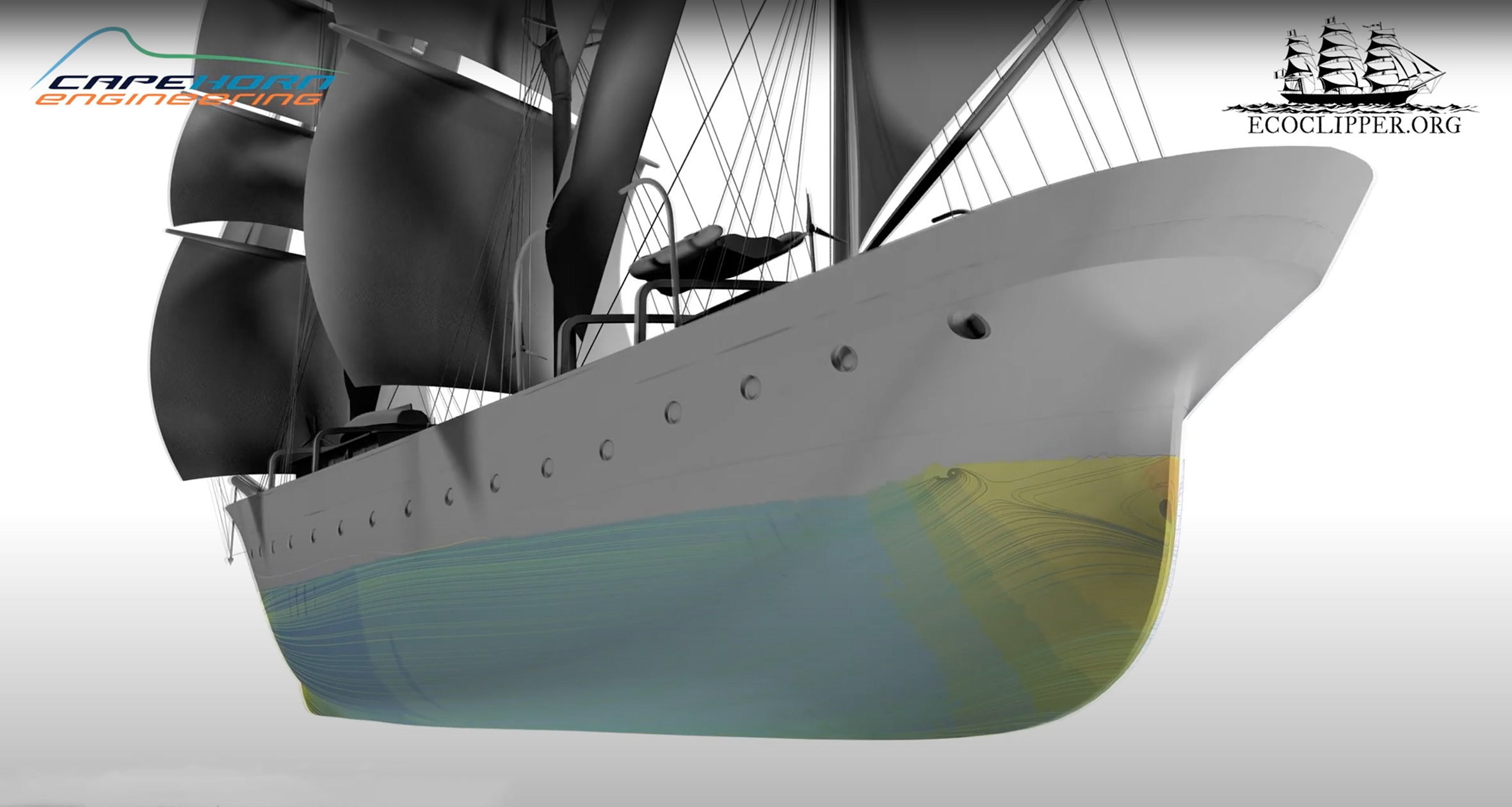Marine technology consultants Cape Horn Engineering will help design the first EcoClipper ship. This innovative ship concept has been created by a group of visionaries to help reduce global emissions and to create a greener, shipping industry.
Concentrating on the traditional principles of harnessing the power of wind for ship propulsion, the EcoClipper ship will offer emission-free sustainable transportation for cargo, passengers and trainees around the world’s oceans.
The Netherlands based company EcoClipper was founded in 2018 by Jorne Langelaan, sail cargo expert and co-founder of shipping company Fairtransport. The new EcoClipper fleet of ships will sail on four shipping lines with fixed schedules, thereby creating a new shipping logistics system for sail cargo vessels.
Also read: Project seeks to improve performance predictions of wind propulsion
The EcoClipper500 will be built in steel with modern construction techniques, based on the design of the successful Dutch clipper Noach, launched in 1857. Whilst the original ship was stated as the fastest Dutch sailing vessel ever built, Langelaan wanted to test different hull shapes, to ensure the best performance for the sail cargo ship.
Langelaan comments: ‘The historic records of Fop Smit’s Noach are extensive. As the design of the ship was built around cargo carrying capabilities and passenger comfort. With Cape Horn Engineering’s expertise, we are able to fine-tune the ship to make sure it can sail as fast as possible, whilst retaining these necessities.’
Computational Fluid Dynamics
Computational Fluid Dynamics (CFD technology) is a crucial support for naval architects to optimise designs for critical elements such as weight saving, performance predictions, reducing emissions and ship optimisation. Cape Horn Engineering was chosen by EcoClipper as a partner company to provide the design team with expert CFD analysis for the design of their first hull shape.
An ambitious R&D programme was agreed and extensive CFD simulations for four different candidate hulls were performed and compared at different sailing conditions to aid the design process. One of the main challenges was to compare fairly dissimilar hull shape candidates without the aid of a Velocity Prediction Program or VPP, where all hydro and aero forces are balanced.
With such a complex sail plan, consisting of three square rigged masts, a maximum of 29 sails (including stunsails) and the maximum sail area being around 1580m2, the generation of a full aerodynamic model was out of the scope of the project. Therefore, sail coefficients for similar sailing vessels found in literature, had to be used, to give a relationship between the driving force, side force and heeling moment, to enable accurate calculations to be made for the hydrodynamic performance of the hull candidates.
Another detailed investigation was aimed at finding the best possible position to install the hydro-generators that will provide the electricity requirements of the vessel. Velocity maps around the hull were analysed in order to find the locations with the most homogeneous and higher speeds for best performance of the turbines.

Also read: Wind assisted ship propulsion puts the sail back into sailing








